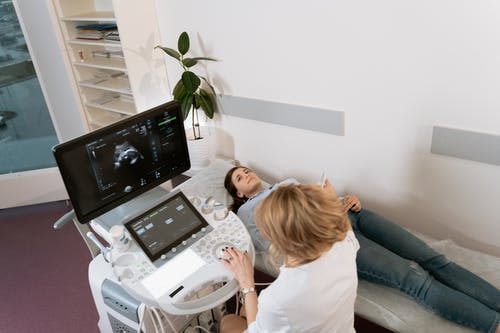The first trimester of pregnancy sets the foundation for maternal and fetal health. During this critical time, ultrasound plays an essential role in confirming pregnancy, determining viability, and identifying early complications. For physicians, midwives, nurse practitioners, physician assistants, and nurses, understanding the key findings and clinical applications of first-trimester ultrasound is vital to providing safe, accurate, and compassionate care. At Ultrasound Trainings, our mission is to equip healthcare professionals with the education and hands-on experience needed to integrate ultrasound confidently into clinical practice.
Why First Trimester Ultrasound Is So Important
Ultrasound provides immediate, noninvasive insights into early pregnancy development. Because many patients present with uncertain dates, bleeding, or pain, an early scan can be both diagnostic and reassuring. First-trimester ultrasound supports timely clinical decision-making, helps detect complications, and strengthens patient trust in their providers.
When to Perform a First Trimester Scan
First-trimester ultrasounds are typically performed between 6 and 13 weeks gestation, depending on the indication. Common reasons include:
- Confirming intrauterine pregnancy and viability
- Dating pregnancy when the last menstrual period is uncertain
- Evaluating pain or bleeding
- Ruling out ectopic pregnancy
- Confirming multiple gestations
- Assessing fertility or assisted reproduction outcomes
Understanding the timing ensures that providers obtain the most useful and accurate clinical information.
Key Findings and Measurements
During a first-trimester ultrasound, providers systematically evaluate several critical parameters:
- Gestational Sac: Usually visible by 4.5–5 weeks, its presence in the uterus rules out most ectopic pregnancies.
- Yolk Sac: The first structure visible within the gestational sac, indicating a viable intrauterine pregnancy.
- Fetal Pole and Cardiac Activity: By 6–7 weeks, cardiac motion can often be detected. A normal fetal heart rate early in pregnancy is strongly predictive of a continuing viable pregnancy.
- Crown-Rump Length (CRL): The most accurate method for dating pregnancy, particularly before 13 weeks.
- Uterus and Adnexa: Evaluation for uterine abnormalities, fibroids, or adnexal masses provides important context for managing early pregnancy symptoms.
- Subchorionic Hemorrhage: Commonly identified, its size and location can guide counseling and management.
At Ultrasound Trainings, our programs teach providers not just how to recognize these findings, but how to interpret them accurately within clinical context.
Clinical Applications Across Healthcare Settings
While first-trimester ultrasound is a cornerstone in obstetric and midwifery care, it has growing relevance across multiple specialties.
- Emergency and Urgent Care: Rule out ectopic pregnancy, assess viability, and identify causes of pain or bleeding.
- Primary and Family Medicine: Establish accurate dating and early pregnancy reassurance within ongoing care.
- Fertility and Reproductive Health: Confirm implantation and early embryonic development following assisted reproduction.
- Midwifery and Women’s Health: Provide continuity of care for home and birth center clients without unnecessary referrals.
This versatility makes ultrasound a valuable skill for providers in nearly every clinical environment.
Safety and Ethical Considerations
Ultrasound is considered extremely safe when performed by trained professionals who follow the ALARA principle—keeping exposure As Low As Reasonably Achievable. While there’s no evidence of harm from diagnostic ultrasound, proper education ensures safe scanning techniques, appropriate indications, and professional boundaries.
At Ultrasound Trainings, we emphasize both technical and ethical responsibility in every course. Providers learn not only how to obtain quality images, but also how to interpret findings within their scope and communicate results clearly to patients.
Training and Competency Development
Effective ultrasound use depends on more than just access to technology—it requires education, practice, and mentorship. Our comprehensive courses at Ultrasound Trainings combine didactic learning, hands-on scanning sessions, and competency-based assessments to ensure providers feel confident in performing and interpreting first-trimester scans.
We tailor our programs to meet the needs of:
- Physicians expanding POCUS capabilities
- Midwives integrating ultrasound into birth center or home birth care
- Nurse practitioners and physician assistants providing primary or women’s health services
- Nurses seeking foundational ultrasound skills to support patient assessments
Elevating Early Pregnancy Care
First-trimester ultrasound strengthens the provider-patient relationship by bringing clarity, comfort, and confidence to early pregnancy care. It enables early detection of complications, reduces unnecessary referrals, and improves outcomes through timely intervention.
At Ultrasound Trainings, we’re passionate about advancing ultrasound education across all levels of healthcare. Our goal is to empower providers to use this technology safely, effectively, and compassionately—enhancing care quality while upholding professional integrity.
Ready to expand your ultrasound expertise? Explore our hands-on workshops, certification programs, and continuing education opportunities at Ultrasound Trainings. Together, we can advance the standard of early pregnancy care—one scan at a time.


